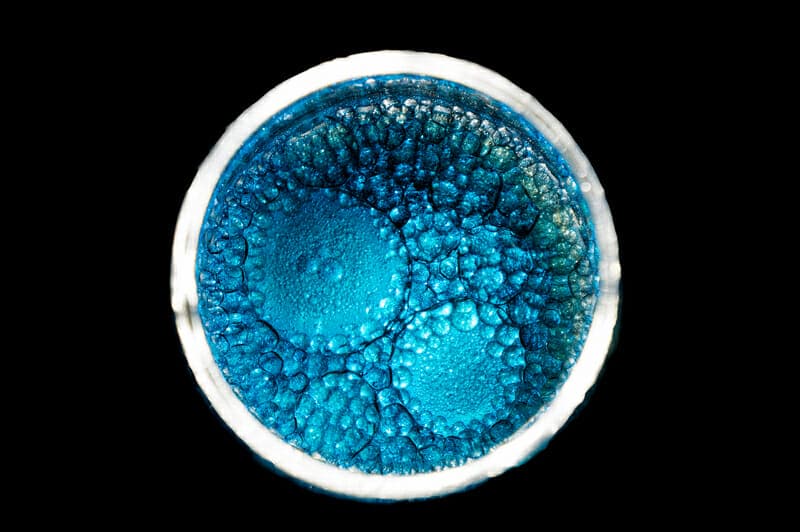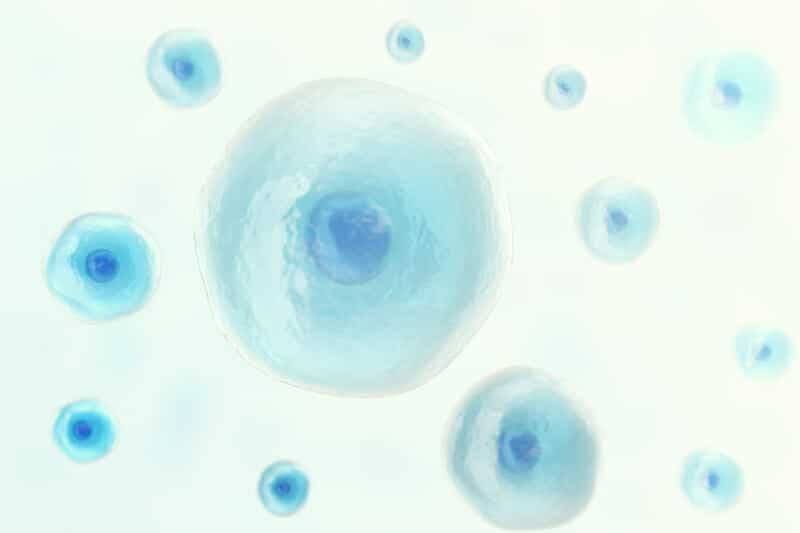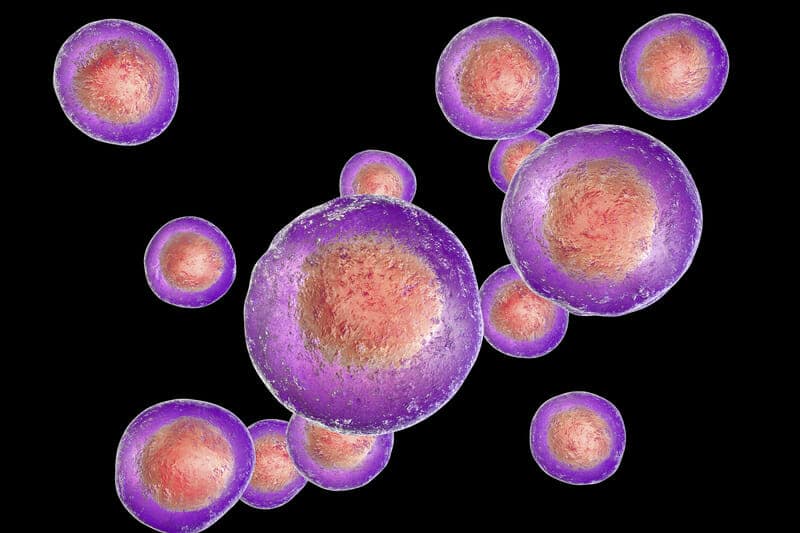Have you ever wondered what happens when your cells suddenly stop dividing for no reason?
The answer is cellular senescence:
“Senescent cell production occurs throughout life and plays beneficial roles in a variety of physiological and pathological processes including embryogenesis, wound healing, host immunity, and tumor suppression.
Meanwhile, the steady accumulation of senescent cells with age also has adverse consequences. These non-proliferating cells occupy key cellular niches and elaborate pro-inflammatory cytokines, contributing to aging-related diseases and morbidity.“
Fortunately, there’s a therapeutic peptide that keeps senescence under control and stops the build-up of too many non-dividing cells: FOXO4-DRI.
Whether you want to prevent neurological diseases or heart damage, this is one peptide you don’t want to ignore!
NOTE: If you have NEVER heard the word “senescence” before, I highly recommend you read this article to get caught up. I’ll do my best to summarize the process in the following section, but the background info will make it 10x easier to understand how useful FOXO4-DRI can be for fully optimized health.
Table of Contents
ToggleWhat Is FOXO4-DRI Peptide?

The FOXO4-DRI peptide has two parts to its name: The “FOXO4” is short for “fork head box O (FOXO) transcription factor”.
This sounds like a mouthful, but it’s not as complicated as you think:
“The forkhead box O family of proteins consists of 4 transcription factors that share a highly conserved DNA-binding, the forkhead box domain (FH). The FH domain is surrounded by large N- and C-terminal intrinsically disordered regions which are essential for the regulation of FOXO function. FOXOs control a plethora of cellular functions, such as cell growth, survival, metabolism and oxidative stress, by regulating the expression of several targeted genes”
The next question is why FOXO4, versus any other number:
“…inhibition of FOXO4 expression using a lentiviral shRNA made cells undergo apoptosis rather than become senescent upon irradiation. More importantly, FOXO4 inhibition in already senescent cells reduced their viability. This established that FOXO4 plays a critical role in consolidating the senescent state and that its inactivation causes senescent cells to undergo apoptosis.”
The second part, “D-retro-inverso” (DRI), will be revealed shortly.
So how is FOXO4 connected to apoptosis (cell death)?
Through another transcription factor by the name of p53:
“p53 is a homo-tetrameric transcription factor composed of an N-terminal trans-activation domain (TAD, residues 1–61), a prolin-rich domain (PR, residues 64–92), a central DNA-binding domain (DBD, residues 93–293) followed by a tetramerization domain (TD, residues 325–355) and the C-terminal negative regulatory domain (NRD, residues 367–393) (Fig. 1). p53 is involved in the regulation of more than 500 target genes and thereby controls a broad range of cellular processes, including metabolic adaptation, DNA repair, cell cycle arrest, apoptosis, and senescence
…Because of its pro-apoptotic function, p53 is recognized as tumour suppressor, and is found mutated in more than half of all human cancers affecting a wide variety of tissues. p53 acts as a sensor for cellular stresses such as genotoxic stress, hypoxia, telomere loss or oncogenic signalling”
So what happens when FOXO4 and p53 interact?
The answer, put simply, is cellular senescence:
“FOXO4 can interact with p53, which is involved in the regulation of multiple target genes and controls a wide range of cellular processes, including metabolic adaptation, DNA repair, cell cycle arrest, apoptosis, and senescence. Studies have shown that FOXO4 can interact with p53, inhibit p53-mediated apoptosis, and thus maintain the vitality of senescent cells”
And just like inflammation, senescence is only bad when too much of it happens:
“Cellular senescence describes a state of permanent replicative arrest in normally proliferative cells… Senescence is now known to contribute to a variety of age-related diseases including type 2 diabetes, obesity, atherosclerosis, COPD, pulmonary fibrosis and others”
“…there are two potential pathways by which senescence may contribute to disease. First, senescent cells stop proliferating, which prevents tissue repair after injury. Second, as senescent cells accumulate, they produce, for unclear reasons, low levels of inflammatory mediators, a phenomenon which has been termed “inflammaging”, particularly when evident in older people [30–33]. Senescent cells contribute to chronic inflammation via the senescence-associated secretory phenotype (SASP), the collective term for the pro-inflammatory chemokines and cytokines released by senescent cells”
Anyhow… the “DRI” in FOXO4-DRI is short for “D-retro-inverso”:
“Retro-inverso peptides are linear peptides whose amino acid sequence is reversed and the α-center chirality of the amino acid subunits is inverted as well. Usually, these types of peptides are designed by including D-amino acids in the reverse sequence to help maintain side chain topology similar to that of the original L-amino acid peptide and make them more resistant to proteolytic degradation”
So what we need is something “senolytic” — an anti-aging compound that destroys senescent cells, which significantly decreases your risk of accumulating age-related diseases.
And that’s where FOXO4-DRI comes in.
How Does FOXO4-DRI Work?

I wanted to reserve this section to talk about FOXO4-DRI’s discovery as it directly relates to how it works in the human body.
In 2017, scientists reversed-engineered that interfering with the FOX04-p53 interaction was critical to inhibiting senescence:
“The specificity of this peptide arises from its design that is based on previously published data on the FOXO3/p53 interaction. In order to increase specificity, this peptide contains a region of the p53 binding site on FOXO4 which differs in primary amino‐acids sequence of FOXO1 and 3.
The peptide has been designed in a D‐retro‐inverso (DRI) manner that has been shown previously to increase drug potency both in vitro and in vivo. We demonstrated using NMR that FOXO4‐DRI peptide competes with FOXO4 for p53 binding and therefore can efficiently interfere with the FOXO4 ‐ p53 interaction”
“…Mechanistically, FOXO4‐DRI promotes nuclear exclusion of active p53. Once released in the cytosol active p53 induces cell‐intrinsic apoptosis by activating a caspase‐dependent pathway likely involved in previously reported transcription‐independent p53‐mediated apoptosis at the mitochondria “
Effectively, FOXO4-DRI is able to selectively penetrate the senescent cells without targeting healthy cells due to the use of D-amino acids instead of L-amino acids.
So not only is the peptide more resistant to enzymatic degradation and protein metabolism, but it also prevents FOXO4 from binding and interacting with p53.
Which is why FOXO4-DRI should be of interest to diabetics:
“Senescence can also be induced in a high glucose environment. When mouse microvascular endothelial cells are cultivated in a high glucose environment increased production of ROS and decreased expression of sirtuin 1 (SIRT1) are observed, resulting in increased acetylation of FOXO1 and p53, and, consequently, upregulation of p21, leading to senescence”
Benefits of FOXO4-DRI

Due to FOXO4-DRI’s recent discovery date, there are very few papers that directly use FOXO4-DRI in an experiment to determine if it can lead to a useful health benefit.
The majority of the papers about FOXO4-DRI are literature reviews where the same few papers are referenced over and over again.
So rather than make you go through all of those reviews to find them, here is a brief summary of the main areas where FOXO4-DRI serves useful via its senescence-destroying properties…
Increased Energy
Another surprising finding in the 2017 Cell paper was increased activity within the mice who were genetically engineered to experience accelerated aging:
“A second unexpected observation was found in the behavior of the treated mice. Whereas XpdTTD/TTD mice generally show less exploratory behavior compared to wild-type littermates, FOXO4-DRI-treated animals were noticeably more active.”
“…we scored the responsiveness of the mice to gentle physical stimuli. Despite individual variation, XpdTTD/TTD mice were on average considerably more responsive to such stimuli after FOXO4-DRI treatment.”
“…we tracked voluntary physical activity in a set-up in which the mice were continuously housed in cages with free access to running wheels. Despite significant individual differences, XpdTTD/TTD mice were found to run 1.37 ± 0.54 km/day on average, compared to 9.37 ± 1.1 km/day seen for wild-type mice, arguing they are indeed less mobile. In line with the behavioral results, exposure of the mice to FOXO4-DRI increased running wheel activity over time in the majority of these.”
Coincidentally, this has also been observed among some biohackers who dared to use FOXO4-DRI on themselves:
“Coincidentally, about a week after the experimental procedures, I noticed my constant nagging low back pain is gone, both moving and at rest. Thirty-year-old grinding noises and pain in my cervical spine from a martial arts injury is reduced about 90%. The twice-weekly headaches went with it. I’m a programmer, and the continuous dull ache in my right wrist, forearm and fingers that has been building for the past 15 years from mouse-usage RSI is also about 90% gone. I’m sleeping better, deeper; waking without the fatigue, stiffness, head and body aches that used to greet every sunrise. My lungs and sinuses are clear, clogged ears unblocked. Breathing deeply is much easier, and a gentle, stimulating pleasure again. A cough I’ve had most of a year is almost entirely gone.”
“I’m fairly conscious of my mental state and concentration, having been treated for semi-mild depression. My concentration seemed improved. I was able to work on proof reading and grammar checks in something I was writing for a good 12 hours without becoming foggy or suffering mental fatigue. Again very rare, but hard to say as wouldn’t have felt that way anyway.”
May Improve Osteoarthritis Treatments
When it comes to treating osteoarthritis, one of the treatments deployed is “autologous chondrocyte implantation (ACI)”:
“[ACI] is a biomedical treatment that repairs cartilage injury in the knee joint, which has been shown to reduce pain and facilitate mobility recovery. It has also been reported that an ACI procedure may prevent the progression of early osteoarthritis in patients with cartilage injuries.
…ACI involves harvesting cartilage, isolating chondrocytes, expanding cells in vitro, and re-implanting over an articular cartilage defect. In order to collect a sufficient number of cells for implantation, isolated chondrocytes usually undergo an extensive expansion from 0.1–0.2 million to 40–60 million… cultured chondrocytes gradually lose the proliferative capacity and the potential of generating the cartilage-specific matrix, a phenomenon known as dedifferentiation.
Moreover, the number of senescent cells also increase with culture time, resulting in a loss of division capabilities, resistance to apoptosis, and the acquisition of a robust proinflammatory secretome known as the senescence-associated secretory phenotype (SASP)”
(FYI = chrondocytes are cells found in healthy cartilage tissue)
The good news is that FOXO4-DRI could be a useful secondary tool in improving the outcome of ACI:
“Results showed that the treatment of FOXO4-DRI removed more than half of the cells in [population doubling level] PDL9 but did not significantly affect the cell number of PDL3 chondrocytes. Compared to the untreated control, the senescence level in FOXO4-DRI treated PDL9 chondrocytes was significantly reduced. Based on the result from standard pellet culture, FOXO4-DRI pre-treatment did not enhance the chondrogenic potential of PDL9 chondrocytes.
However, the cartilage tissue generated from FOXO4-DRI pretreated PDL9 cells displayed lower expression of senescence-relevant secretory factors than that from the untreated control group. Taken together, FOXO4-DRI is able to remove the senescent cells in PDL9 chondrocytes, but its utility in promoting cartilage formation from the in vitro expanded chondrocytes needs further investigation”
Given that FOXO4 expression may be a biomarker for postmenopausal osteoporisis, perhaps the founding researchers were onto something with their discovery.
May Be Useful In Reducing Side Effects Of Cancer Treatments
A 2021 in vivo study found that FOXO4-DRI was able to lower the incidence of senescence induced by radiotherapy:
“Specific induction of senescence-like [cancer-associated fibroblast] apoptosis using FOXO4-DRI, a FOXO4-p53–interfering peptide, resulted in remarkable effects on radiosensitizing NSCLC cells in vitro and in vivo.
In addition, in this study, we also uncovered an obvious therapeutic effect of FOXO4-DRI on alleviating radiation-induced pulmonary fibrosis (RIPF) by targeting senescence-like fibroblasts in vivo. In conclusion, by targeting senescence, we offer a strategy that simultaneously decreases radioresistance of [non–small cell lung cancer] and the incidence of RIPF.”
Not only were the fibroblasts (cells commonly found in connective tissue) more susceptible to radiation therapy treatment instead of being more resistant to it, but it also treated damage and scarring to lung tissue induced by radiation therapy.
A 2-in-1 deal that looks hard to refuse for oncologists, especially since the same result was found two years earlier in a separate study!
Moreover, the 2017 Cell paper revealed FOXO4-DRI was able to lower the cellular senescence induced by chemotherapy treatment Doxorubicin:
“…doxorubicin-induced senescent cells showed an upregulation in FOXO4 foci and FOXO4-DRI potently and selectively lowered the viability of doxorubicin-senescent versus control IMR90. In line with the IR-senescence data, low effective doses of FOXO4-DRI were well tolerated in normal IMR90 compared to ABT-737 while being very potent against doxorubicin-senescent cells at higher doses . Also in this setting, the potency of FOXO4-DRI was more pronounced when applied in consecutive rounds”
Not only did FOXO4-DRI selectively target the senescent cells, but it was also effective agains the induced chemo-toxicity observed in the form of liver toxicity and body weight loss!
Can FOXO4-DRI Treat Low Testosterone?
Although this is only a singular study, it’s interesting to see how senescence is linked to sub-optimal testosterone levels.
Turns out that FOXO4-DRI helped improve a lack of testosterone secretion in aging mice:
“…FOXO4 was specially expressed in human Leydig cells and [its] translocation to the nucleus in the elderly was related to decreased testosterone synthesis. Using hydrogen peroxide-induced senescent TM3 Leydig cells as an in vitro model, we observed that FOXO4 maintains the viability of senescent Leydig cells and suppresses their apoptosis.
By disrupting the FOXO4-p53 interaction, FOXO4-DRI, a specific FOXO4 blocker, selectively induced p53 nuclear exclusion and apoptosis in senescent Leydig cells. In naturally aged mice, FOXO4-DRI improved the testicular microenvironment and alleviated age-related testosterone secretion insufficiency. These findings reveal the therapeutic potential of FOXO4-DRI for the treatment of male late-onset hypogonadism”
Food for thought!
Could FOXO4-DRI Be Used for Hair Loss?
In the pivotal 2017 Cell paper quoted earlier, one of the unexpected benefits was increased fur density in mice treated with FOXO4-DRI:
“Underscoring their aging phenotype, XpdTTD/TTD mice show accelerated loss of hair. While not initially focused on this phenotype, we observed a robust improvement of fur density in FOXO4-DRI-treated XpdTTD/TTD mice.
To address this more quantitatively, we determined the infrared-measured abdominal surface temperature of the mice. Due to the lack of fur, the abdominal temperature of XpdTTD/TTD mice was several degrees higher than wild-type counterparts, an effect reduced by FOXO4-DRI”

The image you see above is what happened over a time period of 4 weeks.
Although this is not definitive evidence, it matches up perfectly with cellular senescence leading to age-associated hair loss via cellular dysfunction of hair follicle cells… which I talked about one year ago.
There’s even a name for this phenomenon — senescent alopecia!
As one hair loss website put it, we’re going to need a lot more data before we talk about a safer and more effective replacement for conventional hair loss drugs:
“I would not take this product in the hopes of re-growing my hair. Too little anecdotal evidence for that as of right now. Not to mention that the price for a full dose treatment is quite prohibitive. However, this whole FOXO4 subject matter is worth following in the coming years.”
This peptide already demonstrates massive potential for helping humans live longer, disease-free lives at a preclinical level.
We don’t know much else about its benefits outside of senescence, but I’m very eager to see how it is applied towards other facets of health.
FOXO4-DRI Dosage for Fighting Senescence

Due to the novel nature of this peptide, the optimal dose of FOXO4-DRI is extremely uncertain.
The only trustworthy source I could find was Ben Greenfield, who recommends 3 mg injected subcutaneously every other day for six days, repeating this short cycle 1-3 times per year.
Other unofficial FOXO4-DRI dosages I have seen recommended include:
- 300 mcg/kg injected intravenously every other day over 5 days (Source)
- 60 mg injected subcutaneously twice a week (Source)
If I ever do choose to use this peptide, I would go with Ben’s protocol as a subcutaneous injection is purported to last longer due to slower absorption.
Some useful tips for storing FOXO4-DRI include:
- If FOXO4-DRI comes in freeze-dried form, store it in your freezer at -20°C if you won’t use it for anything more than a few weeks
- Once you reconstitute the peptide, store it the refrigerator and make sure to use it within the same week… NEVER put it back in the freezer
- Do not repeatedly freeze and thaw the peptide
- Keep the peptide away from sunlight and direct heat
Outside of those small recommendations, you are entirely on your own.
FOXO4-DRI Side Effects and Safety

FOXO4-DRI’s biggest side effect is that we don’t know a whole lot about what this peptide will (or won’t) do to the human body.
The only real guidance we have is from the pivotal Cell paper published in 2017 where FOXO4-DRI was introduced to the world, in which the peptide was well-tolerated without any side effects.
However, from the very few biohackers who have put their lives on the line to experiment with this peptide, here’s what has been reported so far…
- Burning/itching at site of injection (here, here, and here)
- Fatigue
- Nausea
- Muscle soreness
- Vital biomarkers must be consistently tracked to gauge effectiveness of FOXO4-DRI (blood and urine tests, DNA methylation tests, medical scans, etc.)
- Longecity user Vantika advises to NOT take FOXO4-DRI with compounds such as Rapamycin, Quercetin, corticosteroids and cortisol to avoid diminishing its senolytic effects (a 1-2 week washout is what they recommend, possibly five weeks, and nothing shorter than 96 hours)
- FOXO4-DRI is likely useless for healthy men/women in their 20s/30s (as backed up by Longecity member Rocket here and here)
- The senolytic ability observed for FOXO4-DRI may prove to be too powerful in humans and have unintended consequences
There is also a great deal of suspicion behind the testimonials of biohacker Darren Moore — on top of taking multiple supplements simultaneously, he has allegedly failed to show independent proof he is taking 100% pure FOXO4-DRI.
It’s not just FOXO4-DRI that has this problem… many senolytic therapies starting human trials have barriers to cross:
“…there are still lingering unknowns with regards to their effectivity as therapies. Senescent cells were observed to reappear after cessation of senolytic treatment in a model of osteoarthritis (Jeon et al., 2017). This could reflect unresolved damage from the anterior cruciate ligament injury surgery used in this study, although there is also the possibility that removal of senescent cells without targeting the causes that induce their accumulation could limit the benefits of senolytics. Another potential problem of using senolytics is an acceleration of stem cell exhaustion.”
“…Without clearance of apoptotic bodies, secondary necrosis could result in the release of proinflammatory, danger-associated molecular patterns, further exacerbating systemic chronic inflammation. This could limit the effective therapeutic window for senolytic drugs”
Long story short: FOXO4-DRI has a lot of promise as an effective Golden Age agent against senescence, but it’s all promises.
A lot more work has to be done in order to develop a comprehensive safety profile for this peptide.
Where to Buy FOXO4-DRI Online

Sadly, Limitless Life Nootropics does not currently have FOXO4-DRI in stock.
UPDATE: As of October 2023, Limitless Life Nootropics officially has FOXO4-DRI in stock at an unheard-of 99.6% purity.
Use code JAY15 to get 15% off your order!
Many of the existing vendors that do supply the peptide are ridden with red flags:
- Possible bacterial contamination and/or undesirable by-products in the vial
- Offering FOXO4-DRI as an oral tablet or nasal spray, and not as an injectable solution
- A FOXO4-DRI formulation for injection can easily run you $250-1,000 for a single 10mg vial (even Mexico-based peptides company Cuerpoymente won’t stock it)
- Lack of verifiable quality control tests — Bucky Labs, one of Darren Moore’s recommended suppliers, allegedly refused to provide purity testing data to customers who asked for it
So don’t expect to try this peptide anytime soon… and even then it might be better to wait until clinical trials for FOXO4-DRI begin.
In the meantime, here are some alternative peptides that have senolytic properties: 5-Amino 1MQ, MOTS-C, Epitalon, and Humanin.
Additional Reading Resources For FOXO4-DRI

Unfortunately, there isn’t much I can offer on the peptide FOXO4-DRI that I haven’t already covered in this article.
What I can do is provide you with some deeper readings on the topic of senescence and show you how mission-critical it is to stop this process from getting out of hand.
My podcast with Dr. Suzanne Turner is a must-watch on actionable tips for modulating and mediating senescence.
This detailed guide from FightAging.org is everything you need to know about experimenting with FOXO4-DRI on yourself.
As always…
Raise Your Vibration To Optimize Your Love Creation!
PS – If you want my advanced hacks and elite tactics on keeping senescence as low as possible, join The Fully Optimized Health Private Membership Group.
It’s your greatest opportunity to fully optimize your health, gain total access to myself and network with high-level men and women looking to 10X their life.



